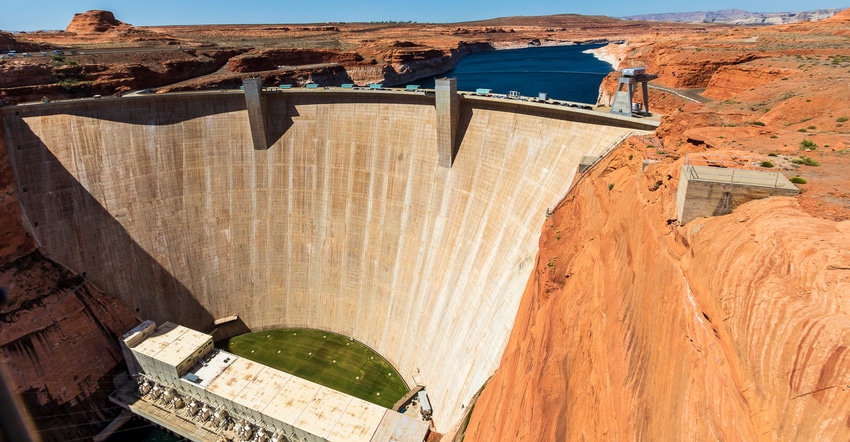
One curve appears to be flattening now, but the news is still not good out of Lake Mead as the giant reservoir continues to disappear.
Bureau of Reclamation officials are expected to announce restrictions on water deliveries from the lake during a press conference next week. In mid-May the reservoir fell below its threshold for Tier 1 restrictions. This means reduced deliveries to Arizona and Nevada users next year while California can continue pumping as usual.
By the second week of August Lake Mead was at 1,067 feet elevation, nearly 10 feet below the 1,075-foot threshold for Tier 1, and 12 feet from a more restrictive Tier 2 designation. The same rules play under Tier 2: California gets to continue to pump water from the Colorado without restriction while the other two states take more severe cutbacks.
Reclamation projects that Lake Mead could fall to Tier 3 status in 2025, a level that promises to force California to sit up and take notice. Under previously negotiated plans, that's when California must reduce its take on the Colorado River. The hue and cry from Los Angeles to San Diego promises to be loud when that happens.
Meanwhile, federal water managers are trying to avoid a similar dead pool fate at Lake Powell as just happened at Oroville Dam in northern California. Officials at Oroville Dam had to shut the hydroelectric power plant down for the first time ever due to low lake levels.
Lake Powell still has some water left to maintain hydroelectric power operations, but it's precariously low. The loss of power from Glen Canyon Dam will only exacerbate the power supply shortage in the West.
Reclamation is trying to avoid this, though projections don't look good. Addition 181,000-acre feet of water from upper basin reservoirs in New Mexico, Colorado and Wyoming is expected to add three feet of storage to Powell and perhaps buy some time in hopes that rain and snow can reverse the lake's course.
USBR delivers water to 10 million acres of farmland under normal conditions. One in five Western farmers – about 140,000 growers in all – receive water from Reclamation. About one-fourth of the nation's fruit and nut crops and about 60% of the country's produce crop is grown from water managed by the agency.
Additionally, 15% of the nation's power, or about 40 billion kilowatt hours of electricity, is generated from 53 dams managed by the federal agency.
Picture is dire
The water supply picture across the West is dire. As of late July, the Colorado River System contained less than 22-million-acre feet of water, or 38% of the system's carrying capacity. Lake Powell can contain over 24 million-acre-feet of water at capacity.
California's decision to curtail state water rights and deliveries due to bleak hydrologic conditions there only promises to make the situation on the Colorado River worse. Previous water agreements give California no incentive to reduce pumping from the Colorado River at Parker, Ariz. until Lake Mead falls another 42 feet. Reclamation predicts a 20-38% likelihood of that happening by 2025.
Meanwhile, there are many unanswered questions in California under the recent curtailment order. What happens next year if drought conditions continue? There will be no water remaining as the state's reservoirs will have been tapped dry. Groundwater conditions will become so depleted under this scenario by next summer that some suggest the state will step in and order groundwater pumping to cease under most circumstances.
Even if the skies bless California with ample rain this winter, what then? Will the state find another excuse to hold back water from farms, forcing them to fold financially under emergency groundwater pumping restrictions? Either way it looks bleak for California agriculture.
Moreover, what effect will the latest wildfires have on water quality in the reservoirs under a wet-season scenario when the charred remains of forests razed by conflagrations are washed into lakes and streams? How will this impact water quality and availability throughout the state?
About the Author(s)
You May Also Like






